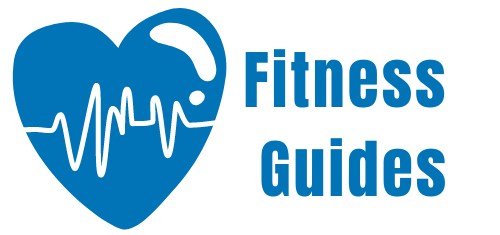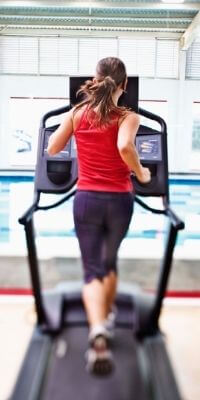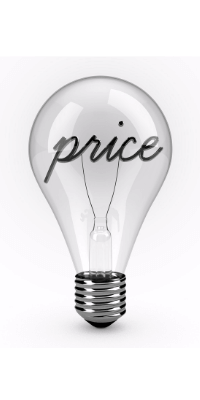Running on the treadmill is a popular way to exercise. Treadmills are known to accelerate weight loss, increase conditioning, and improve heart health.
It’s also essential to choose the right running machine.
We’ll discuss various treadmill types according to operation, features and purpose, price range, and calories burnt. You’ll learn how to pick the best running machine for your needs and what to avoid.
Keep reading below!
Table of Contents
Operation
There are two different types of treadmills depending on operation: manual and motorised (electric).
1. Manual Treadmills 
Manual treadmills move when you move. You can set their tension and incline, but you can’t make them move on your own.
So the higher you push, the faster the treadmill will go.
But here’s another advantage:
You have fewer chances of getting hurt because this sort of treadmill won’t start until you’re walking on it.
Besides, manual treadmills don’t need a source of electricity, which means you don’t have to place yours near a wall socket.
On the downside, manual treadmills usually sport shorter running belts.
Why is this a drawback?
If you’re tall and consequently have long legs, you need a longer belt. If you prefer running over walking, you also need more space.
But here’s the hidden advantage: These types of running machines are compact, but they’re also easier to fold because they lack wiring.
Although manual treadmills are cheaper, you’ll miss some of the bells and whistles of motorised treadmills, such as LED attachments, pulse measurements, and stats.
The good news is some models allow you to adjust the incline.
2. Motorised Treadmills
Motorised treadmills need electricity to work, so one direct consequence is their larger footprints.
That can be a negative point if you don’t have a lot of space in your home. It can also be a positive if you need a longer and sturdier treadmill but aren’t so interested in portability.
Another advantage comes in the shape of all those bells and whistles we mentioned above.
These models have features and options galore, from built-in programs to accurate measurements and technological advancements that make your head spin.
Just imagine:
- Self-cooling engines
- 22-inch screens
- Personal training systems
- Auxiliary ports for your gadgets
- Up to 40% incline options
And the list can go on.
Features
There are six different types of treadmills depending on their purpose and features:
1. Folding
Folding treadmills are portable and easy to store. You can even pack a smaller one in your van and use it while travelling.
However, folding treadmills aren’t as sturdy as their commercial-grade peers, so they don’t reach very high speeds. They also lack some extra features like incline or high-tech options, and they’re not best for heavy-set people.
2. Commercial And Semi-Commercial
These treadmills are the most rugged and solid of the bunch. Their powerful motors, impact-absorbing belts and interactive screens are essential features if you want to train aggressively.
These treadmills withstand hours of abuse every day, so investing in one is a good idea if you want to train for a marathon or have a home gym. Besides, these running machines have extended warranties and support heavy people.
3. Under-The-Desk
These treadmills are created for sedentary office workers who want to squeeze in some extra steps during the day. However, don’t expect a lot of advanced-level features.
Under-the-desk treadmills don’t reach very high speeds because it would be weird – if not impossible – to run and work simultaneously.
Their purpose isn’t intense training; so, they lack some features that would facilitate this goal. For example, under-desk treadmills don’t feature long belts and chest straps.
4. Hybrid (Treadclimbers)
Treadclimbers are a 3-in-1 treadmill-elliptical-stair climber combination. Although they’re more expensive, hybrid treadmills are amazing calorie-burners.
Besides, these machines exercise your entire body. So, if you can’t squeeze in both an elliptical and a treadmill in your home gym, treadclimbers are an excellent total-body training, muscle-building alternative.
5. Medical
Medical treadmills are best for rehab because they put very little pressure on your joints. Also known as zero-gravity treadmills, these models will assist your recovery at half the price of physical therapy.
However, it’s best to get a medical treadmill after consulting with your doctor or therapist. It’s also best to do at least the first few sessions under their direct supervision until you get the hang of it.
6. Curved
Curved treadmills are manual treadmills with concave shapes. This curve is supposed to burn up to 30% more calories because they’re harder to push and engage more muscle groups.
And here’s something you didn’t expect: curved treadmills are gentler on your joints. As a result, they’re valuable weight-loss tools for people with arthritis or other bone-related pain. They’re also excellent weight-bearing tools to increase your bone density if you already have osteoporosis and can’t walk for very long.
7. Incline
Many treadmills have incline options, so select the one that fits your needs best. Walking at an incline is proven to burn more calories, even if that incline is as tiny as 2%. However, if you want a strenuous workout, consider a 20-40% incline treadmill.
These treadmills improve heart health, are joint-friendly, and condition your body for natural terrain. You should also purchase an incline treadmill if you want to strengthen your shins and ankles.
Plus, your calves will look downright Herculean.
Price
As a rule of thumb, manual treadmills are cheaper than motorised treadmills. However, you can find plenty of cheap electric treadmills of decent quality.
You can also notice that folding treadmills are usually the cheapest, whereas commercial and semi-commercial treadmills are the most expensive.
But even that statement has exceptions.
So remember that the more quality materials and high-tech features a treadmill has, the more it will cost. It’s essential to know what to expect for each price range, though:
1. Below £300
These affordable treadmills aren’t low-quality. However, they have basic functionality, and so they’re best for entry-level and run-of-the-mill workouts – mostly walking instead of running.
Cheap treadmills are best for brisk running, mobility-challenged people, and rehab.
- Small running areas
- 10-12 km/h maximum speed
- 100-120 kg max weight
- Limited features
- Limited or no warranty
2. £300 – £600
These value-for-money treadmills are best for beginners who want to improve their fitness levels. These running machines are sturdier and better for regular use.
Besides, you can see some more built-in programs and incline levels corresponding to a more powerful motor. You can also expect some extra features such as two-person delivery, more extended warranties and connectivity options.
- 5-10 incline levels
- Small-medium deck size
- Around 1.5 HP motor
- Maximum 15 km/h speed
- Some connectivity options like speakers
3. £600 – £800
These more expensive treadmills are best for intermediate levels because they can achieve higher speeds. Besides, you can count on sturdier and higher-quality materials that improve your overall running experience. We’re talking about better impact-absorbing decks, extensive programs and built-in workouts.
- Longer and broader running decks
- 18-25 km/h maximum speeds
- More incline levels
- At least 15-20 programs
- More accurate stats, including heartbeat
- Best for the whole family
- More delivery options
- In-home repairs
- Longer warranties
4. £800 – £2,000
These more expensive treadmills are gym-quality and sleek. You can find more interactive features, higher power motors, and intense speeds. Besides, the materials and craftsmanship are usually worth every penny.
These treadmills are best if you have a specific purpose in mind, such as training for long-distance races or if you’re a high-performance runner.
- Pulse-based training
- Very wide running belts
- High maximum speeds
- Programs galore
- High incline
- 3 HP motors
- Running apps
- Cooling technology
- White-glove delivery
5. Above £2000
These expensive running machines are usually in the commercial or semi-commercial array. You can expect yours to come with integrated TV and high-tech consoles for interactive running.
These treadmills are very durable, withstanding over 10-12 hours of use per day. However, you can’t fold them, and they take up a lot of space.
Calories Burned
Many people want to find out what the best treadmill for weight loss is.
The answer is more straightforward than you might think: the best treadmill to burn calories fast is the one you’re using.
That means you need to purchase the right treadmill for your needs. Technically a commercial-grade treadmill would bring the best results, but not if it gathers dust and semi-dirty clothes in your living room.
So you can’t judge a treadmill’s weight loss potential independently of your goals, routine, and needs.
Let’s do that here:
- Folding treadmill: Best for weight loss if you’re a casual user below 120 kg with little space in your house.
- Commercial and semi-commercial: Best for weight loss if you have a high budget and want to train for hours every day. You find that you lose motivation quickly, and you need a lot of entertainment and virtual training options to keep you coming back for more.
- Under-the-desk: Best for weight loss if you don’t have time to work out at home. As such, you can burn more calories during your workday, for example, during your meetings.
- Hybrid: Best for weight loss if steady-state cardio increases your appetite or leads to weight-loss plateaus. That’s because hybrid treadmills exercise your entire body
- Medical: Best for weight loss if you have weak joints and bones, if you’re recovering after surgery, or have substantial mobility problems. A medical treadmill is also the best place to start if you have morbid obesity.
- Curved: Best for weight loss if you want to decrease the impact on your joints and also want to shape your glutes in the process.
- Incline: Best for weight loss if you want to shed those pounds quickly, as running at an incline takes more effort. Besides, walking at an incline builds lean muscle that burns more calories when you’re at rest. Incline treadmills are also a worthwhile weight loss alternative for people who prefer low-impact workouts.
In Conclusion
We’ve taken you through multiple types of treadmills, so now you know that your best bet is to choose one that fits your needs. Even if, in theory, high-tech treadmills are better because they have more options, you have to use those options in the first place. But some people fare better with no-frills running machines that are value-for-money, compact, and easy to use.
We promised in this article’s title that we’d tell you what to avoid.
And if that’s not clear already, we’re going to spell it out:
Don’t buy a treadmill because it’s advertised as the best. Don’t even buy a treadmill that your own mother says it’s the best.
Instead, start by considering what you need and what you’d like. For instance, a marketing team can present virtual training or thirty-plus programs as the ultimate achievement. But you might be better off with a run-of-the-mill foldable 10 km/h treadmill you’re using while watching The Queen’s Gambit.
So if you need some honest reviews to help you make the right choices, read these articles below:
- At What Incline Should You Walk on a Treadmill? - August 29, 2022
- 7 Best Budget Exercise Bikes (under £200) - April 5, 2022
- 6 Best Compact Treadmills for Small Spaces - April 5, 2022




